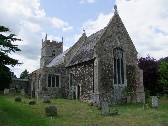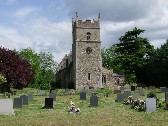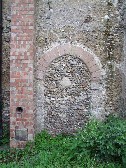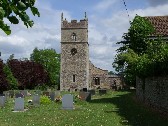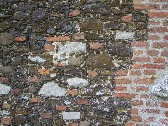| |
|
All
Saints, Wretton
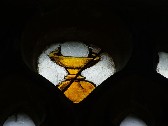 |
|
All
Saints is the best of the Stoke Ferry group of
churches. Since the closure of the former parish
church of Stoke Ferry, it is also the parish
church for that large village. Its handsome
crowned tower rises above a long graveyard
overlooking the village green. It is not a big
church, and the body of it seems to fold behind
the tower, the south aisle like one wing
extended. The chancel is largely of carstone, the
rest largely of flint. This church is open every
day, unusual in south-west Norfolk and a reason
for the parish to be thanked and congratulated. As at
neighbouring Wereham, with which this church has
much in common, the building was relatively
complete by the 13th century. Happily, the
Victorian restoration here was not as
overwhelming as it was at Wereham, although the
roofs all date from this time.
|
Curiously,
both the north and south entrances (that to the north
filled in) appear 'Norman' in shape, but neither have any
stone dressing surviving. A curiosity, because the
Victorians were generally fond of Norman. Perhaps the
doorways were too badly damaged. You step rather steeply
down the the south doorway. Mortlock found steps, but now
there is a perilously cambered floor, as if in a
funhouse. You step into a slightly ramshackle church
which is full of interest, and full of the feel of its
parish in the lively days of the early 17th Century.
| The
best feature is the set of locally carved benches
of 1627, dated and signed by the churchwardens.
Sam Mortlock observed that the leaf design along
the back is also to be found on the reading desk,
suggesting that it was made by the same village
craftsman. Some early glass survives. There is a
roundel of a white rose, and a chalice and cup
which may be continental. The rather dim George
III royal arms above the tower arch are, as
Mortlock points out, annotated Springfield
and Sons Painters 1816, the only example he
knows of in Norfolk of a set signed by the
manufacturers, and the only set I know of too. A
curiosity: outside on the north side, obscured by
greenery, a cast iron bracket sticks out beneath
a window. What on earth can it have been for?
|
|
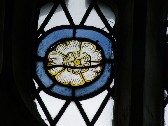 |
|
|
|

